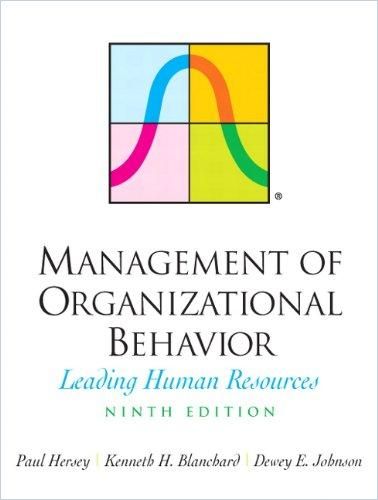Bestselling management and leadership experts Paul Hersey, Kenneth H. Blanchard and Dewey E. Johnson offer a comprehensive manual for inspiring, understanding and leading employees.

The A Team
Paul Hersey, Kenneth H. Blanchard and Dewey E. Johnson provide essential reading for anyone who seeks to become a better manager or leader – from parents to teachers to CEOs.
Their accessible tips and concrete examples offer guidance anyone can follow, as in their previous books. Hersey wrote The Situational Leader and co-authored Classics of Organizational Behavior and The Ethical Executive. Blanchard wrote The One-Minute Manager and the classic, mega-bestseller Who Moved My Cheese? Johnson wrote Catching Success.
Although the authors can get caught up in terminology and over explain their frameworks, their research-backed advice and clear prose more than make up for it. They offer easy-to-understand rubrics for determining what leadership style a situation requires and how to implement it. As a broad overview of a humanistic approach to management, their manual delivers.
Employee Behavior
Management, the authors explain, is about getting people to do what you want them to do in order to accomplish goals and achieve outcomes that move your organization forward.
An organization is a unique living organism whose basic component is the individual and this individual is our fundamental unit of study. Thus, our concentration is on the interaction of people, motivation and leadership.Paul Hersey, Kenneth H. Blanchard and Dewey E. Johnson
Hersey, Blanchard and Johnson explain that all behavior has a goal that springs from motives or needs, and then they demonstrate how smart managers apply research-based behavioral science to influence employee behavior.
To inspire people to perform as you’d like, the authors suggest setting things up so that meeting their goals requires them doing what you want. Hersey, Blanchard and Johnson offer the example of people working to meet their goal of earning money. Other goals may include attaining security, forming social groups, earning esteem, and gaining self-actualization through autonomy, connectedness and job mastery. People prefer to work toward realistic, challenging goals they think of as their own.
Adapt
Hersey, Blanchard and Johnson insist that leadership does not spring from innate qualities acquired through genetics or learned experience. Good leaders aren’t born with a prescribed set of intrinsic personality traits. The best leaders moderate their behavior according to circumstances and the person or team involved.
An effective manager brings a degree of order and consistency to tasks. A leader, by contrast, inspires employees with a vision and helps them to cope with change.Paul Hersey, et al.
The authors posit leadership as operating on two fundamental axes: relationship behavior and task behavior. Relationship behavior, they reveal, consists of listening to, showing concern for and building intimate, caring relationships with workers. Task behavior focuses on getting things done and showing people how to do them.
Hersey, Blanchard and Johnson believe no one style of leadership is best. Sometimes, they counsel, you might lead through clear, strict orders. Other times, you might build trust by talking with employees about their wants, needs and hopes, collecting their thoughts, and collaborating to make decisions.
Leaders lead, Hersey, Blanchard and Johnson instruct, by harnessing their power wisely and using it selectively and situationally. The authors describe two kinds of leadership power: position power derived from titles and personal power derived from followers. A sound leader, they stress, uses both.
Responsibility
The authors assert that managers should blame themselves when their followers perform poorly. Figure out how to help your followers develop their skills, Blanchard, Hersey and Johnson urge, and help them grow. Offer incentives, recognition and rewards for success. Don’t set a time frame for someone to develop new skills – let each person learn at his or her own pace.
Leaders sometimes have to sacrifice short-term friendship for long-term respect.Paul Hersey, et al.
Blanchard, Hersey and Johnson suggest that if you must discipline employees, you should intervene early; focus on performance, not personality; keep any discipline private; and always follow through.
The authors teach that to communicate well, you should use active language; avoid filler words like “I think;” listen carefully to your employees; and establish rapport in conversation by faintly mirroring their gestures. The most important step you can take is to dedicate yourself to your organization and your followers.
The Experts
If you’re looking for a one-stop shop for all your management advice needs, this might well be it. These three authors have each written best-selling classics in the fields of management, self-actualization and leadership. They form a team of business author superheroes. And, in keeping with their other works, they write without pretension, using direct, comprehensible language . They break their advice down into logical sections. The lessons from each section are clear, actionable and easy to remember. Hersey, Blanchard and Johnson demonstrate a crucial leadership gift: their words are inspiring and, as such, will give new leaders courage.
Ancillary reads on management techniques include Dr. Paul Hersey’s The Situational Leader, and Kenneth H. Blanchard‘s Leadership, the One Minute Manager Updated and Leading at a Higher Level.





